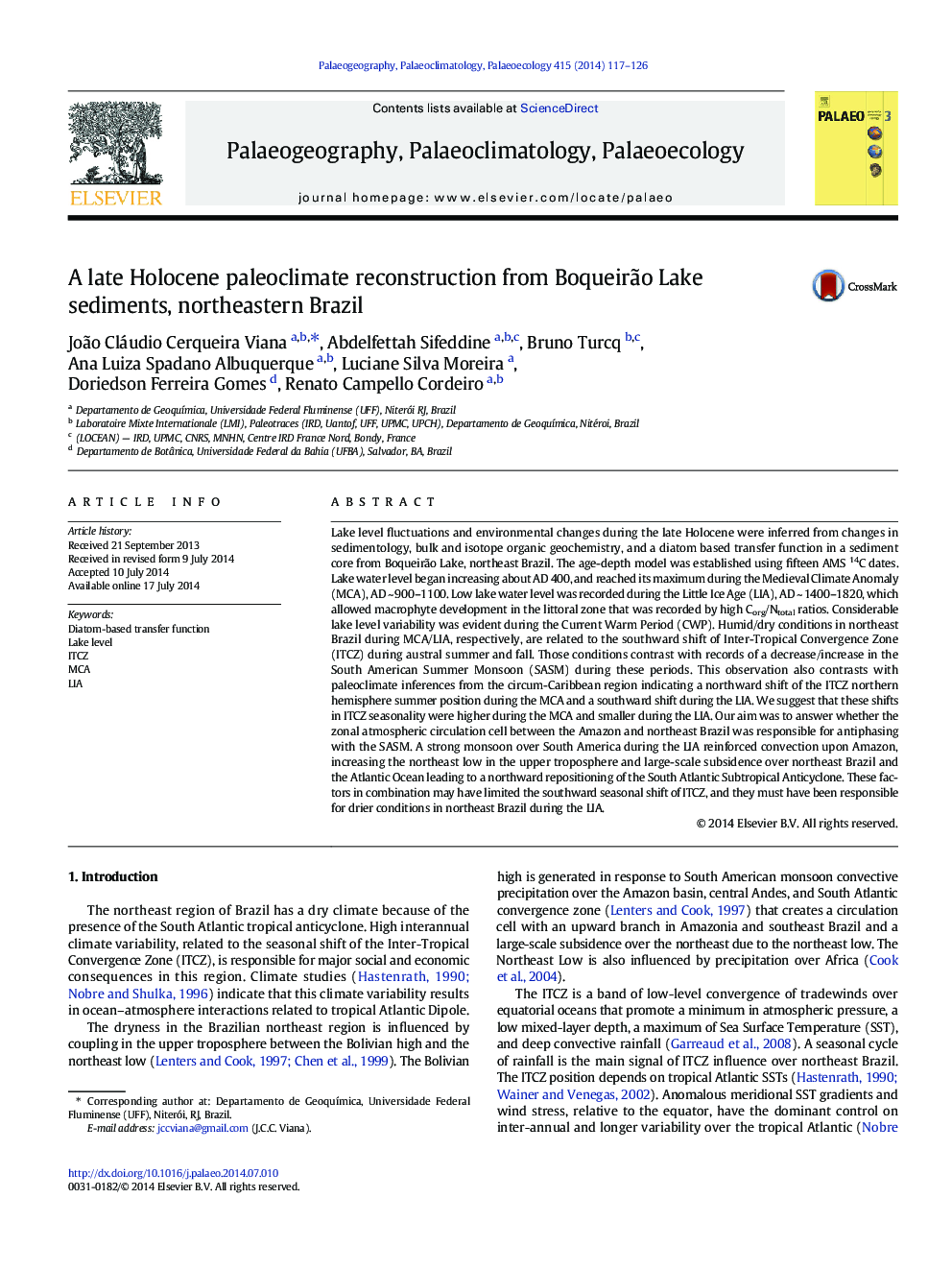| کد مقاله | کد نشریه | سال انتشار | مقاله انگلیسی | نسخه تمام متن |
|---|---|---|---|---|
| 4466170 | 1622175 | 2014 | 10 صفحه PDF | دانلود رایگان |

• We studied sediments from Boqueirão Lake, Northeast Brazil (sensitive to ITCZ).
• Diatom-based transfer function showed the lower water level between 400 BC and AD 400.
• Medieval Climate Anomaly presented lake levels reaching its maximum.
• Little Ice Age was a dryness period with low lake levels in the last 1000 years.
• ITCZ seasonal shifts were larger during the MCA and tighter during the LIA.
Lake level fluctuations and environmental changes during the late Holocene were inferred from changes in sedimentology, bulk and isotope organic geochemistry, and a diatom based transfer function in a sediment core from Boqueirão Lake, northeast Brazil. The age-depth model was established using fifteen AMS 14C dates. Lake water level began increasing about AD 400, and reached its maximum during the Medieval Climate Anomaly (MCA), AD ~ 900–1100. Low lake water level was recorded during the Little Ice Age (LIA), AD ~ 1400–1820, which allowed macrophyte development in the littoral zone that was recorded by high Corg/Ntotal ratios. Considerable lake level variability was evident during the Current Warm Period (CWP). Humid/dry conditions in northeast Brazil during MCA/LIA, respectively, are related to the southward shift of Inter-Tropical Convergence Zone (ITCZ) during austral summer and fall. Those conditions contrast with records of a decrease/increase in the South American Summer Monsoon (SASM) during these periods. This observation also contrasts with paleoclimate inferences from the circum-Caribbean region indicating a northward shift of the ITCZ northern hemisphere summer position during the MCA and a southward shift during the LIA. We suggest that these shifts in ITCZ seasonality were higher during the MCA and smaller during the LIA. Our aim was to answer whether the zonal atmospheric circulation cell between the Amazon and northeast Brazil was responsible for antiphasing with the SASM. A strong monsoon over South America during the LIA reinforced convection upon Amazon, increasing the northeast low in the upper troposphere and large-scale subsidence over northeast Brazil and the Atlantic Ocean leading to a northward repositioning of the South Atlantic Subtropical Anticyclone. These factors in combination may have limited the southward seasonal shift of ITCZ, and they must have been responsible for drier conditions in northeast Brazil during the LIA.
Journal: Palaeogeography, Palaeoclimatology, Palaeoecology - Volume 415, 1 December 2014, Pages 117–126